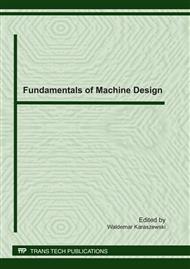p.64
p.76
p.83
p.90
p.97
p.106
p.119
p.128
p.135
Experimental Investigation of Prototype Water-Lubricated Compliant Foil Bearings
Abstract:
First gas-lubricated compliant foil bearings (CFBs) were built in the 1950s. Due to their significant advantages, such as oil-free operation, good tolerance to bearing misalignment and very low maintenance, they have been penetrating the bearing applications for high speed compressors, air-cycle machines and gas turbines. The work presented here investigates a novel idea of water-lubricated compliant foil bearings, which could be used in applications where environmentally friendly lubrication is desired, for example in hydroelectric turbines or water pumps. Experimental results collected for three prototype water-lubricated foil journal bearings are presented. The tests were conducted under steady radial load and with the sliding speed varied incrementally. A sequence of design improvements is presented, with the best bearing demonstrating friction coefficient of about 0.01 at the sliding speed of about 4 m/s and the radial load of about 300 kPa. Encountered difficulties, research methodology and the testing equipment are also described.
Info:
Periodical:
Pages:
97-105
Citation:
Online since:
September 2011
Authors:
Keywords:
Price:
Сopyright:
© 2012 Trans Tech Publications Ltd. All Rights Reserved
Share:
Citation:


